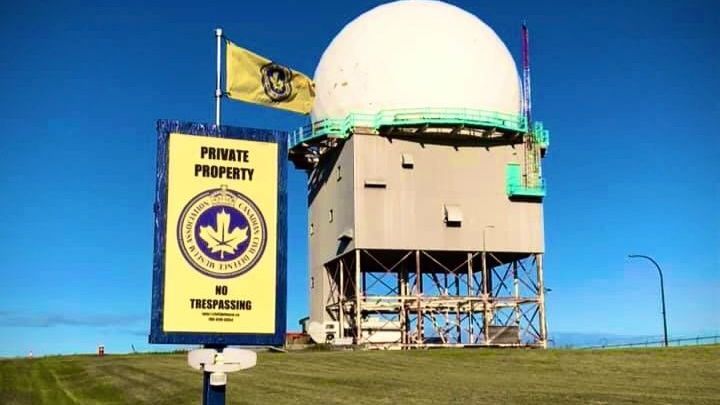
ALSASK RADAR TOWER PRESERVATION & RESTORATION
Don protégé
 THIS IS THE LAST STANDING RADAR TOWER IN CANADA FROM THE COLD WAR. This tower along with hundreds of others went from coast to cost across Canada to protect Canadians and Americans of a Russian invasion.
THIS IS THE LAST STANDING RADAR TOWER IN CANADA FROM THE COLD WAR. This tower along with hundreds of others went from coast to cost across Canada to protect Canadians and Americans of a Russian invasion. The the technology that was used in these radar towers where state of the art and didn't exist anywhere else in the world! Have you ever asked yourself, where your kitchen microwave came from?
THE CANADIAN CIVIL DEFENCE MUSEUM ASSOCIATION IS DEDICATED TO SAVING, PRESERVING AND SHARING THIS PART OF OUR NATIONAL HERITAGE.
THIS TOWER STANDS IN HONOR OF ALL CANADIANS WHO DEDICATED THEIR LIVES TO PROTECT AND SERVE FOR ALL OF US. THIS SITE NEEDS TO BE PRESERVED AND SHARED FOR ALL CANADIANS.
WILL YOU HELP US PRESERVE AND PROTECT THIS PART OF OUR NATIONAL HERITAGE FOR GENERATIONS TO COME?
Site #: C-53 (RCAF)
AC&W #: 44 Radar Squadron
Callsign: November, Jade Ring
Construction Dates:
Start: January, 1961
End: October, 1961
Operational Date: Early 1963
SAGE Operational: May 1963
Radar Equipment:
Search: FPS-7C, FPS-107
Height: FPS-26, FPS-507A , FPS-6X
Closure Date: August, 1987
The radar station (site C-53) was located at the junction of provincial highways 7 and 44, on the border of Alberta and Saskatchewan, hence its name. The nearest community was the village of Alsask, which bordered the southern boundary of the 418 acre military facility. Saskatoon was 184 miles to the east, while 225 miles away to the west was Calgary. The area had typical glacial moraine with gentle rolling hills, and was notorious for dust storms, high winds, electric storms and fierce blizzards.
RCAF Station Alsask was conceived in 1959 as part of the CADIN/Pinetree Project. Initial clearing and grading of the land began in the summer of 1961. Construction commenced soon after and was completed in December 1962. On 1 November 1962, RCAF Station Alsask was officially established. The long range radar unit, 44 Radar Squadron, was operational and took over the newly constructed station in early 1963. Equipment at the station included the FPS-7C Search and the FPS-507 and FPS-206 Height Finder radars. The site was declared SAGE-Operational in May 1963 at which time the entire station was declared operational within the 24th NORAD Region.
The station was later known as a Canadian Forces Station in May 1967. In the fall of 1983, the ROCC concept was introduced to replace SAGE. In August 1984, both ROCCs Canada East and Canada West (Alsask came under Canada West) were declared operational.
Alsask carried on with their assigned duties until they were disbanded on 1 August 1987.
Organisateur
Justin Case Fred Armbruster
Organisateur
Red Deer, AB